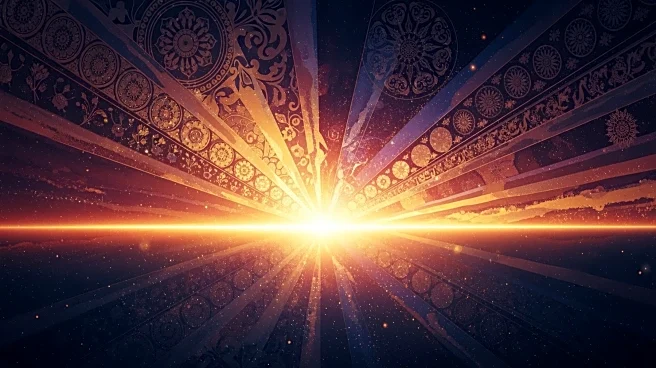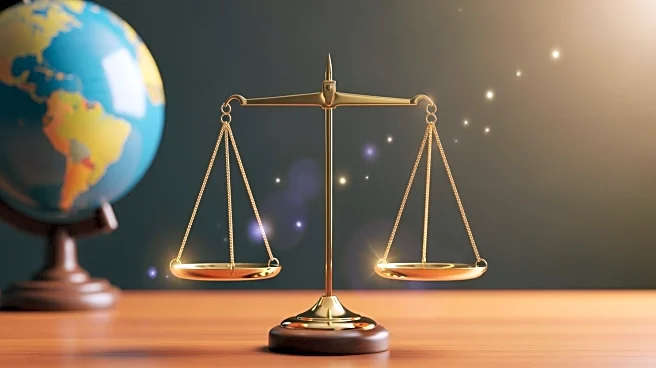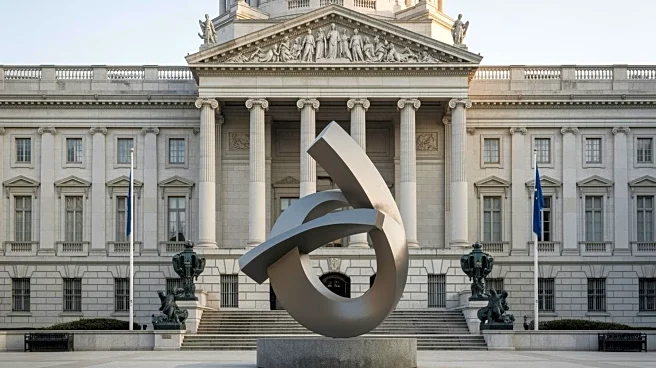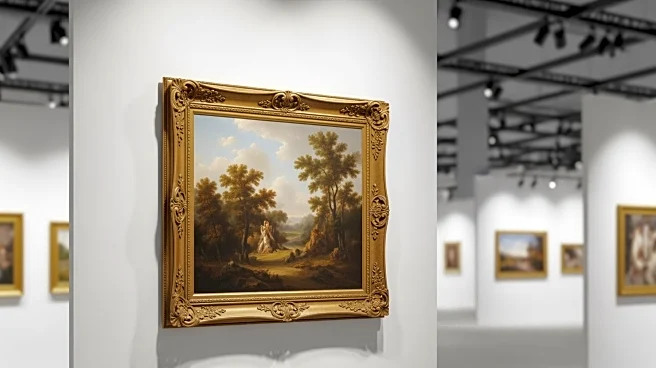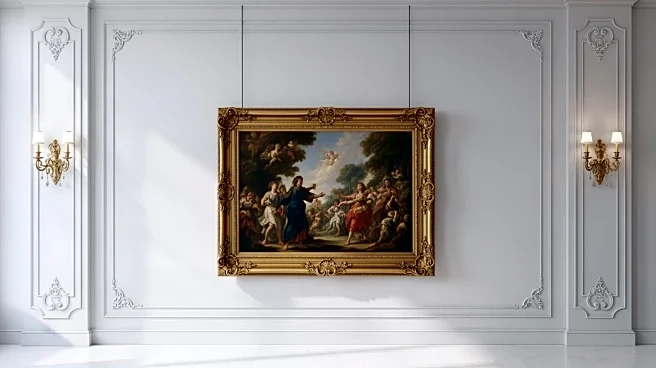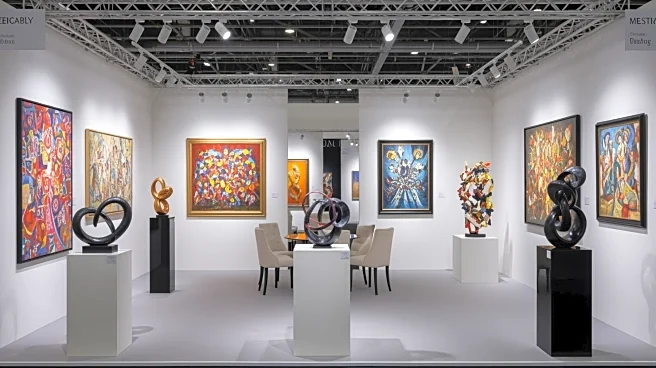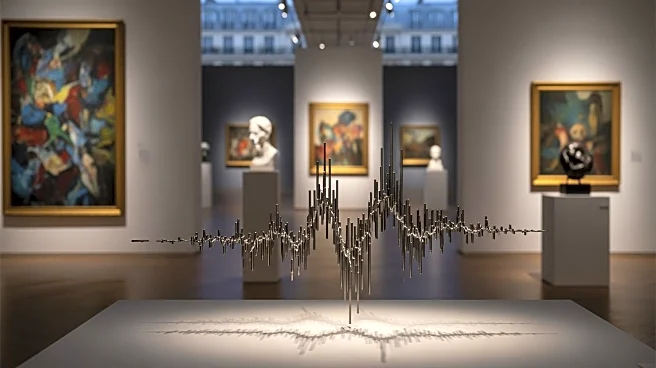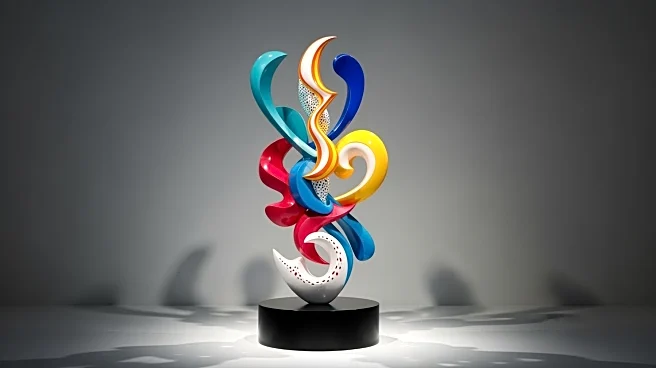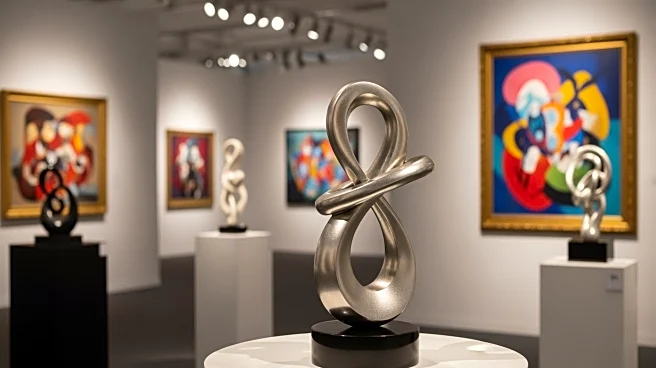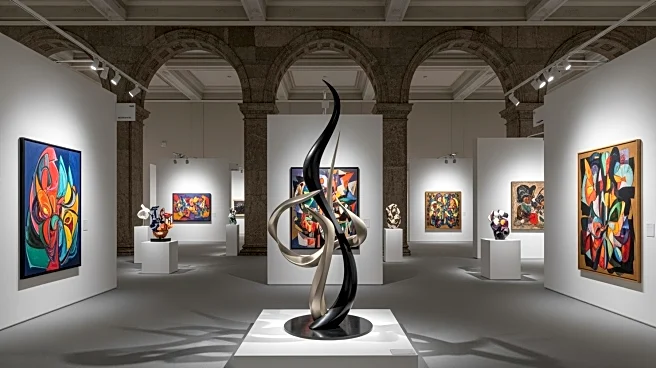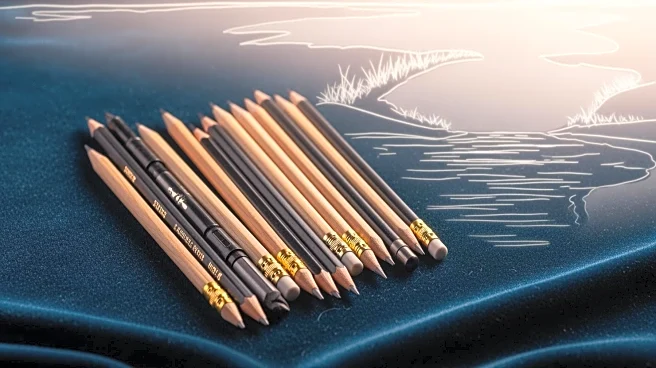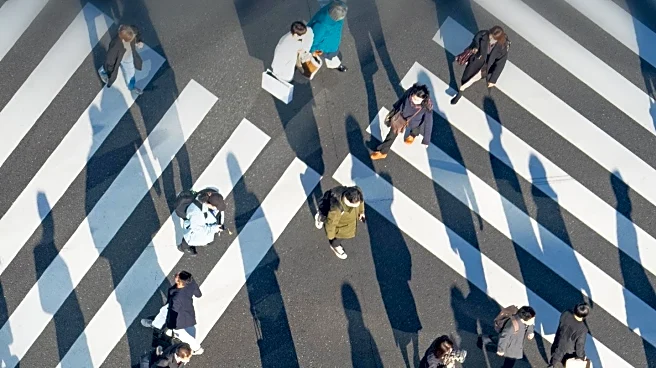What's Happening?
The art world is experiencing a significant shift in power dynamics, with the Middle East and Asia emerging as influential centers. Recent developments include Frieze's announcement to relaunch the Abu Dhabi Art fair and Art Basel's plans for a new fair in Qatar.
Additionally, the Old Masters gallery Colnaghi is opening a branch in Riyadh, supported by Saudi private equity. This shift is part of a broader trend where traditional art hubs like New York and London are losing dominance due to the economic rise of Asia, post-Brexit changes in Paris, and strategic cultural investments by Gulf states. These changes are reshaping the global art market, spotlighting new artists, and attracting major players to these regions.
Why It's Important?
The emergence of new art hubs in the Middle East and Asia has significant implications for the global art market. It diversifies the cultural landscape, offering new opportunities for artists and galleries. This shift could lead to increased investment in local art scenes, fostering creativity and innovation. For collectors and investors, these regions present fresh opportunities to engage with emerging markets. The strategic cultural investments by Gulf states also reflect a broader trend of using art to enhance national branding and soft power. As these regions gain prominence, they could challenge the traditional dominance of Western art centers, potentially altering the dynamics of art valuation and collection.
What's Next?
As the Middle East and Asia continue to grow as art centers, we can expect further expansion of art fairs and galleries in these regions. Major art institutions may establish more satellite projects, increasing their global footprint. The rise of new collectors and patrons in these areas could drive demand for diverse artistic expressions, influencing global art trends. Additionally, the strategic cultural investments by Gulf states may lead to more collaborations with Western art institutions, fostering cross-cultural exchanges. The art world will likely see a continued shift towards a more globalized and interconnected market, with new players influencing its future direction.
Beyond the Headlines
The shift in art world power dynamics highlights the role of cultural diplomacy and soft power in international relations. Gulf states are using art to project a modern, progressive image, which can influence perceptions and foster international partnerships. This trend also raises questions about the sustainability of art markets in regions heavily reliant on government support. The concentration of power among a few wealthy patrons could impact the diversity and independence of artistic expression. As new art hubs emerge, there may be ethical considerations regarding the influence of wealth and politics on cultural development.
